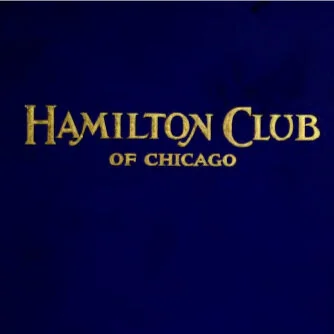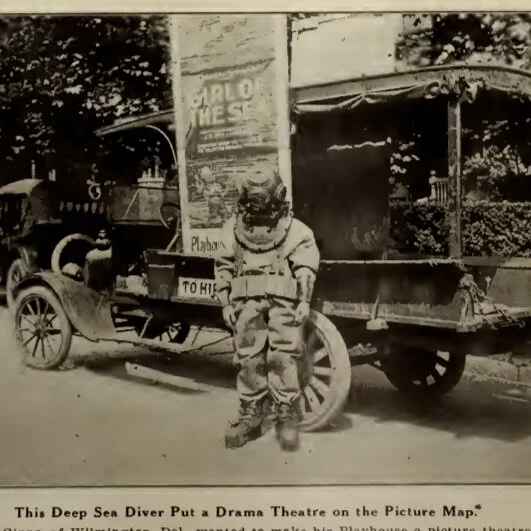The Gruwells: Leon Goetz's Movie Family
There is an unsigned testimony pertaining to Leon Goetz’s career in the “Goetz Theater” archives at the Monroe Historical Society. The interviewee says that Leon Goetz was a projectionist at the Crystal Theater in Monroe, prior to which he was a itinerant roadshow operator.
“The Story of Monroe” by E. C. Hamilton says that prior to setting up his theater in Monroe, Leon Goetz operated Nickelodeons in the Dakotas.
With so many stories, which one is right?
The earliest vetted mention of Leon Goetz’s movie career is in the November 15th 1916 edition of Janesville Daily Gazette, where it was reported that the Monroe Ministerial Association hoped to convince Manager Leon Goetz to close his theaters on Sunday. In exchange, they would boost Leon’s establishments from their pulpits. Technically, the ministers had Wisconsin law on their side, as operation of non-essential businesses on the Sabbath was illegal, though this law was rarely enforced.
The second piece of the puzzle comes from Leon’s June 5th, 1917 draft card, where Leon states his profession as “theater proprietor”. However, the Janesville Daily Gazette and the draft card are only telling half the story. In the 1916-17 period Leon Goetz is better described as an employee of the Gruwells, a husband-wife duo who operated at least one theater in Monroe by 1914.
The Gruwells were an odd pair; the husband was a newspaper man while the motivation for the theater business lay with Mrs. Gruwell. Their union appears to have been one of convenience. It was certainly Mr. Gruwell’s connections that greased the couple’s way into movies: Gruwell had served the Arrow Film Corporation in some capacity at a time when its management were very interested in recruiting newspaper talent to oversee business development. By 1914 J. P. Gruwell was informing Motography readers about the best way to employ newspaper advertising to drive movie ticket sales and how he used music in his Monroe theater.
Gruwell’s connection with the Arrow Film Corporation is key to understanding Leon Goetz’s early career. Arrow Film (1915-27) was run by the Shallenberger brothers (John F. and William Edgar) who had also provided the money for Charles Jackson Hite to buy Thanhouser Film Corporation, a successful New York City film firm which rivaled Edison’s.
When the Motion Picture Patents Company [MPPC], otherwise known as the “Edison Trust”, went after film producers who were infringing on their patents, the Shallenbergers got together Hite and the top Midwestern film exchange operators, John Freuler (a Monroe, WI native) and Harry E. Aitken, as well as Minnesotan Crawford Livingston, to form Mutual Film. Mutual Film was designed to mass-produce and distribute films for the American Midwest and fend off MPPC legal suits.
John Freuler worked out of Chicago and his movie ventures hired talent from the old Essanay Company, which had offices in London, Berlin and Barcelona besides its flagship undertakings in Chicago. This global distribution network based in Chicago was part of the value that Freuler brought to the Shallenberger operation through Mutual Film.
Mutual Film worked closely with Teddy Roosevelt and British intelligence interests which were keen to bend US public opinion in favor of joining WWI. To this end, a great many “preparedness” war-films were produced and shown. According to a 1956 edition of the Monroe Evening Times, J.P. Gruwell and Leon Goetz opened the new “Monroe” theater in 1916 with an airing of the most notorious of these war-films, “Battle Cry of Peace”, for which Teddy Roosevelt had organized the use of US servicemen as extras.
In the early days of this propaganda outreach (1915), the investors in Mutual set up a different company, Arrow Film, which ostensibly existed for the same purpose but with the added bonus of supplying Pathe Films too, a French firm which was the preeminent film production company prior to WWI. Over the course of WWI, the Shallenbergers ran three companies which appeared to compete with each other: Mutual, Thanhouser and Arrow.
The Arrow Film Corporation’s logo courtesy of Wikipedia.
At the end of WWI in 1918, both Mutual and Thanhouser closed down. This left the industry scratching their heads, because these firms had both talent, equipment and plenty of money in the bank. Arrow was there, however, to pick up where its sister firms had suddenly left off. Arrow’s head, Edgar Shallenberger, had this to say about his vision for newspapermen in the movie industry:
‘“We have on this side the Atlantic,” Mr. Shallenberger said recently to a Moving Picture World representative, “the greatest writers of action - action as opposed to dialogue or atmosphere or just literary style. The American author is born amid such surroundings of activity, he is so much a part of them that when he does turn to literature as a pursuit he puts into his stories the snap and vim and virility of national daily existence…Too few of these men have been absorbed by the film industry. Too few well trained newspapermen, familiar with the real tragedy and comedy of life, are in the business. We need them in the scenario and even in the actual staging of photoplays.”’
J. P. Gruwell’s appearance in Monroe has everything to do with the business strategy of Edgar Shallenberger, a political ally of Theodore Roosevelt and British-aligned interests on the East Coast. Leon Goetz was born in the right place to benefit from this confluence of interests in 1915.







